Irwin IP is pleased to announce that Barry Irwin, Michael Bregenzer, Lisa Holubar, Jason Keener, and Robyn Bowland have been recognized by Leading Lawyers, a prestigious division of Law Bulletin Media. This recognition reflects their exceptional skill, innovation, and commitment to delivering outstanding results in the field of intellectual property law.
A special acknowledgment goes to our managing partner, Barry Irwin, who has earned this distinction every year since 2004. His consistent recognition underscores his dedication to excellence and his impact on the legal community.
Leading Lawyers identifies the most respected and experienced attorneys through an extensive peer-review process and rigorous evaluation by an Advisory Board. To be included in this distinguished group is a significant achievement, and we are proud to see our attorneys acknowledged among the best in the profession.
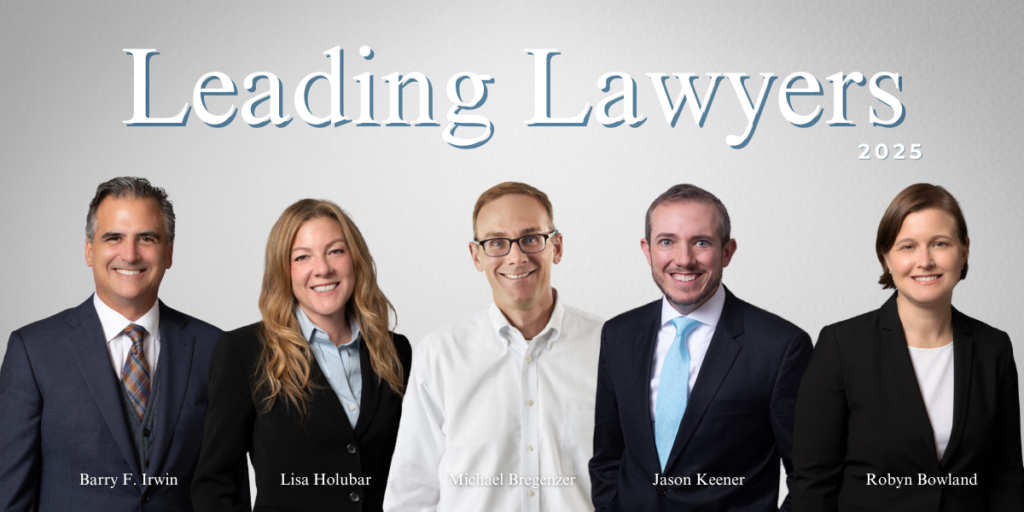
——–
Irwin IP specializes in mission-critical intellectual property and technology litigation, catering to a diverse client base, including Fortune 500 companies and innovative startups. Our expertise extends to enforcing and protecting intellectual property portfolios, ensuring our clients’ product lines, worth hundreds of millions annually, remain secure. Notably, we routinely, successfully litigate against the largest, most prestigious law firms representing the largest companies in the world on matters valued in the tens and hundreds of millions.
Colors are generally permitted as source identifiers for trademarks or trade dress because they are typically perceived as an ornamental feature of a good or service (e.g. Louboutin’s red soles, T-Mobile magenta, Tiffany blue). However, this week, the Federal Circuit affirmed the Trademark Trial and Appeal Board (“TTAB”) decision cancelling trademarks protecting the “color pink applied to the entire surface of goods” of ceramic hip components. Specifically, the Federal Circuit reasoned that the color protected by CeramTec’s (registrant) marks were functional because the record demonstrated that CeramTec believed that the color was a result of optimizing that ceramic’s performance.
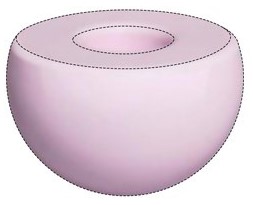
CeramTec manufactures artificial hip components used to replace damaged bone in hip replacement procedures. Those artificial hip components, which CeramTec calls “Biolox Delta,” are composed of a composition of a zirconia-toughed alumina (“ZTA”), which also includes compounds like chromium oxide (“chromia”). The amount of chromia within the ZTA affects the color of the product – which can be several varieties of colors, including “pink, red, purple, yellow, black, gray, [and] white[.]” In Biolox Delta’s case, CeramTec infuses its ZTA with exactly 0.33% by weight of chromia, which makes the product the pink color that CeramTec sought to protect. Despite the variety of possible colors of ZTA in hip replacement use, CeramTec acknowledged that its now-expired patents disclosed that its particular composition of ZTA “contributes to the overall hardness of the ZTA ceramic,” a desirable quality in hip replacement components. As such, CeramTec’s patents were strong indicators that the feature of 0.33% chromia by weight in ZTA, was functional. Likewise, the TTAB noted that CeramTec itself advertised Biolox Delta by advertising that chromia provides various functional benefits to ZTA ceramics. As a result of these two factors, the Federal Circuit affirmed the TTAB’s finding that the color pink was functional.
Color cannot serve as a trademark to the extent that it yields a utilitarian or functional advantage. TMEP § 1202.05(B) To extent there exists a competitive need for others in the same industry to use that color, a trademark registrant should not be permitted to bar the rest of the industry from using that color indefinitely, as such a monopoly would harm the public. Normally a color trademark or trade dress is cancelled for functionality where the color itself serves a purpose. For example, the color purple for sandpaper has been held functional, because abrasive manufacturers needed to use purple to indicate grit size. Saint-Gobain Corp. v. 3M Co., 90 USPQ2d 1425, 1446-47 (TTAB 2007). The color pink in the context of surgical wound dressings was also found functional because the color closely resembled Caucasian skin. In re Ferris Corp., 59 USPQ2d 1587 (TTAB 2000). In this case, however, the underlying color of a chemical composition was found to be functional, even though the color itself did not serve a function but was a byproduct of the functionality of the good itself. That said, CeramTec already enjoyed the benefits of its patents covering such a composition. Accordingly, industries reliant on innovative materials should continue to rely on a diverse intellectual property portfolio to properly protect its products.
It’s December, and everywhere you go, the streets and stores are awash in seasonal décor, and holiday products and Christmas programming are glistening in your eyes once again. In the spirit of the season, we have compiled “five golden [th]ings” to know about the intersection of Christmas and protecting seasonal brands.
1. Yes Virgina, You Really Can Trademark “Christmas”—Sometimes. As of December 20, 2024, there were 1,174 live trademark applications/registrations containing or consisting of the word “Christmas.” For example, MRS. CHRISTMAS (Reg. No. 6434862) is registered for Christmas decorations; Christmas ornaments and decorations of nonelectrical type, and WHITE CHRISTMAS for use in connection with ice cream recently has been published for opposition. Interestingly, the United States Patent and Trademark Office (“USPTO”) did not require either of the foregoing marks to disclaim the word CHRISTMAS apart from the mark as shown. But more often than not, a disclaimer has been required. For example, CHRISTMAS PLUS (Reg. No. 6,215,204) for use in connection with entertainment services in the nature of providing entertainment programs and content, namely, movies, was required to disclaim “Christmas.” Similarly, THE JOLLY CHRISTMAS SHOP (Reg. No. 6,276,960) for use in connection with catalog ordering service featuring holiday home decor also was required to disclaim “Christmas Shop” to achieve registration. Something to consider, some applicants choose to proactively disclaim “Christmas” to speed along the application process, such as CHRISTMAS CAMP (Reg. No. 5,976,769) for use with Christmas tree ornaments, which achieved registration in only 7 months.
2. It’s The Most Seasonal Time of the Year. Descriptive trademarks require proof of secondary meaning to achieve registration. Secondary meaning is shown via evidence of (among other things) length and exclusivity of use. Similarly, trademarks require proof of continuous use in order to avoid a finding of abandonment. The fact that Christmas-related trademarks are seasonal by nature and thus are only in use leading up to and during the holiday season each year can make showing a significant “length” of use and “continuous use” difficult to prove. Luckily, the USPTO and various courts have noted the special circumstances of seasonally-available brands, including holiday brands, and have taken that seasonality into consideration in both secondary meaning and abandonment contexts. Trademark Manual of Examining Procedure § 901.02, citing H.R. Rep. No. 1028, 100th Cong. 2d Sess. 15 (1988) (“‘[T]he ordinary course of trade’ varies from industry to industry . . . for example, it might be in the ordinary course of trade for an industry that sells expensive or seasonal products to make infrequent sales . . .”). But holiday brand owners should be mindful to make the most of their time on the market and document their use evidence closely.
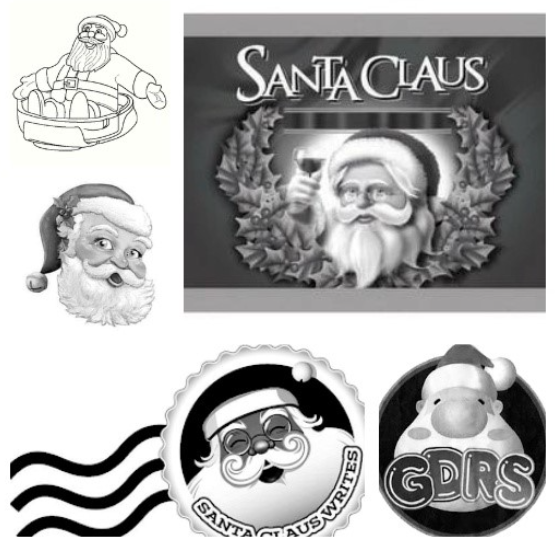
3. Santa Claus’ Logo is Coming to Town. Though legends of Santa Claus date back to St. Nicholaus in the 17th Century, the rotund, white-haired, and rosy-cheeked image of Santa Claus that probably comes to mind for most of us was itself first used as a trademark for the Coca-Cola Company (Reg. No. 3,121,372). This does not mean others cannot use a Santa image or name as part of their holiday brand: There currently are 161 live applications or registrations with a description containing SANTA CLAUS and 166 with the words “SANTA CLAUS,” “SANTA CLAWS,” or “SANTA PAWS.” But it does mean that brand owners need to be sure their “SANTA” marks are unique and make that jolly old soul their own. See Reg. Nos. Reg No. 5673045, 6205836, 5991346, 6253850, and 3286698.
4. All I Want for Christmas is Protectable Trade Dress. In a mid-2024 Christmas case, a business using CHRISTMASHOUSE sued another business using CHRISTMAS regarding the look and feel of its competing, immersive Christmas-themed walk-through attraction. The owner of CHRISTMASHOUSE requested an injunction, but because it failed to plead trade dress infringement, establish a protectable trademark, or demonstrate irreparable harm, its request was denied. Christmas H. USA Inc. v. ChristmasLand Experience LLC, No. 23-CV-8412 (LDH) (SIL), 2024 WL 1494687, at *4 (E.D.N.Y. Apr. 5, 2024). The case was later dismissed. But those seeking to protect non-traditional holiday trade dress should not dismiss their dreams of protectability. Instead, being mindful to avoid claiming protection over a general style or concept, they must adequately define their claimed trade dress, demonstrate the distinctiveness of the overall visual impression of their claimed trade dress, and prove that their claimed trade dress is nonfunctional. Functionality inquiries first ask whether the significant non-trademark function is essential to the use or purpose of the trade dress or affects its cost or quality. If not, the second question is whether protection of the claimed feature as a trademark would impose a significant non-reputation-related competitive disadvantage.
5. It’s Beginning to Look A Lot Like Design Patents and Copyrights. Trademarks and trade dress are perhaps the most common means of protecting the look and appearance of seasonal product offerings, but by no means are they the only means of protection. The appearance of such products also can be protected by design patents or copyrights. Variations of Christmas tree lights, Christmas tree ornaments, and even Christmas trees have all been protected by a design patent at some point. D935,648; D952,200; D803,718; D1044582. In addition, three-dimensional depictions of Christmas characters can earn copyright protection as a sculptural work. In an early 2024 decision in a Schedule A copyright case, Naughtys LLC, maker of adult-themed Santa and Mrs. Claus ornaments successfully obtained a TRO and then preliminary injunction against various third parties selling similar ornaments that allegedly infringed the copyrights of Naughtys LLC. Naughtys LLC v. Does et al, No. 4:2024cv00142 (E.D. Tex. 2024). On December 12, 2024, the Eastern District of Texas entered default judgment against all defendants remaining in the case.
There you have it, the holiday season may be the most wonderful time of the year, but it is also, perhaps, the most brand-focused time of the year. All we at Irwin IP want for Christmas is to help you with your intellectual property protection needs (and perhaps a new convertible too, light blue).

On December 3, 2024, USPTO Director Kathi Vidal, for a second time, granted Director Review of the Patent Trial and Appeal Board (“Board”)’s denials of institution of inter partes review (“IPR”) in three proceedings. And, for a second time, Director Vidal vacated those denials and remanded the case to the Board for an unheard of third review.
The case began in 2022, when the Patent Owner’s real party in interest, NextGen Innovations, LLC, filed lawsuits against multiple defendants including Petitioner Nokia of America (“Nokia”). In March of 2023, Nokia filed the IPR petitions at issue here challenging certain claims of three optical communication networks patents. In response, the Patent Owners argued the Board should deny institution under 35 U.S.C. §§ 325(d) because the examiner had already considered substantially similar grounds during prosecution or 314(a) in view of the parallel district court proceedings. The Board agreed and denied institution under § 325(d). On March 28, 2024, Director Vidal vacated these denials. On remand, the Board again denied institution under § 325(d). Nokia once again sought Director Review, which Director Vidal again granted. Director Vidal then analyzed the Board’s denial of institution under both § 325(d) and the two-part Advanced Bionics framework and § 314(a) and the Patent Owners’ request for discretionary denial, even though the Board had not discussed that ground.
Beginning with § 325(d) and the Advanced Bionics analysis, the only issue was whether the Board adequately analyzed the first part of the framework which requires to Board to evaluate whether the same or substantially the same art or arguments were previously presented to the Office. Nokia argued that the two prior art patents it relied upon in the IPRs differed from a prior art reference (a patent to Brede) that the USPTO examiner had identified during prosecution because they disclosed an optical transceiver and relied upon a different prior art reference for the teaching that this optical transceiver be “pluggable.” The Board found this difference immaterial to the examiner’s consideration of whether Brede disclosed a pluggable transceiver and determined that the references disclosed similar subject matter. However, Director Vidal noted that the patent owner had argued to the examiner that its claimed invention differed from Brede because the claimed invention had an optical transceiver, whereas Brede had a separate transmitter and receiver. Thus, Director Vidal found that the difference between the new prior art was material, and that the Board erred in finding that the Petitioner’s obviousness arguments substantially the same as the Examiner’s anticipation rejection based on Brede. Thus, Director Vidal vacated the Board’s Remand Decision and declined to exercise her discretion to deny institution under § 325(d).
The Board did not reach whether the petition should be denied under Section 314(a) on grounds that the patents are the subject of parallel district court proceedings. However, Director Vidal nonetheless addressed the issue via the PTAB’s six-factor Fintiv analysis. Director Vidal found three of the six factors neutral, that one favored denial, and two favored institution. In light of taking a “holistic view of whether efficiency and integrity of the system are best served by denying or instituting review,” Director Vidal declined to invoke her authority under § 314(a) to deny institution and remanded to the Board for further consideration on the merits.
Historically, requests for Director Review were very seldom successful, and it was rare to see a USPTO Director disagree with a panel’s findings. This case presents a highly unusual situation in which the USPTO Director has vacated denial of institution not once, but twice in the same case. This might signal a shift in USPTO practices towards more Director involvement in institution denials, particularly where the Board has failed to closely scrutinize the arguments. This potentially offers a path for petitioners to overcome otherwise non-appealable initial denials.
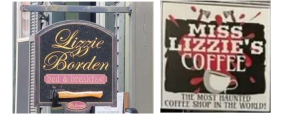
On November 15, 2024, the U.S. Court of Appeals for the First Circuit affirmed the denial of a preliminary injunction, whacking the historic Lizzie Borden House’s ability to prevent its next-door neighbor, Miss Lizzie’s Coffee LLC (“Miss Lizzie’s”), from using the “Lizzie Borden” name and distinctive hatchet logo. Despite there being actual confusion as to whether the Lizzie Borden House is associated with Miss Lizzie’s, the First Circuit found that to be insufficient because the source of consumer confusion was not from the similarity of the disputed marks.
US Ghost Adventures, LLC (“Ghost Adventures”) operates ghost tours at the Lizzie Borden Bed & Breakfast and has registered trademarks for the “Lizzie Borden” name and a hatchet logo. On September 18, 2023, Ghost Adventures sued Miss Lizzie’s for trademark infringement and unfair competition. Ghost Adventures moved for a preliminary injunction to stop Miss Lizzie’s, which is located next door to the Lizzie Borden Bed & Breakfast, from using a storefront signage display with the words “Miss Lizzie’s Coffee” between a cup of coffee and stylized hatchets. Ghost Adventures argued that the signage used by Miss Lizzie’s was similar to its registered mark, the parties’ markets (i.e. “hospitality services”) were the same, and there was actual customer confusion as to whether the two businesses were associated with each other. The district court denied the preliminary injunction because Ghost Adventures had not demonstrated a likelihood of success on the merits. Ghost Adventures appealed.
On appeal, the First Circuit found that the marks used by Miss Lizzie’s and Ghost Adventures to be facially dissimilar because Ghost Adventures used a realistic hatchet logo while Miss Lizzie’s had a whimsical, spewing blood version. Additionally, the First Circuit found that the parties offered distinct goods and services to different consumers. Ghost Adventures provided “sophisticated” tourists with ticketed ghost tours and merchandise, whereas Miss Lizzie’s offered public coffee and snacks. Finally, the First Circuit noted that while actual consumer confusion was present, as explained below, it was not relevant here. Therefore, the First Circuit affirmed the denial of the preliminary injunction.
With respect to consumer confusion, the First Circuit explained that consumer confusion due to non-trademarked business similarities does not constitute infringement. Here, the First Circuit discounted the consumer confusion because the confusion was not caused by the use of the marks. Instead, the consumer confusion was due to non-trademark factors such as both businesses being on a historical site and being in close proximity to each other. Miss Lizzie’s storefront also had an explicit disclaimer of any relationship with Ghost Adventures. Ghost Adventures could not use its historically related “Lizzie Borden” mark to prevent other hospitality businesses from setting up shop in the vicinity.
Consumer confusion is often the lynchpin of trademark infringement. This case serves as a cautionary tale that the source of consumer confusion must stem from the mark itself and not from other factors such as proximity of a business or targeting the same customers. It is something that businesses operating near famous attractions or that involve trending pop culture themes should keep in mind when marketing their business.
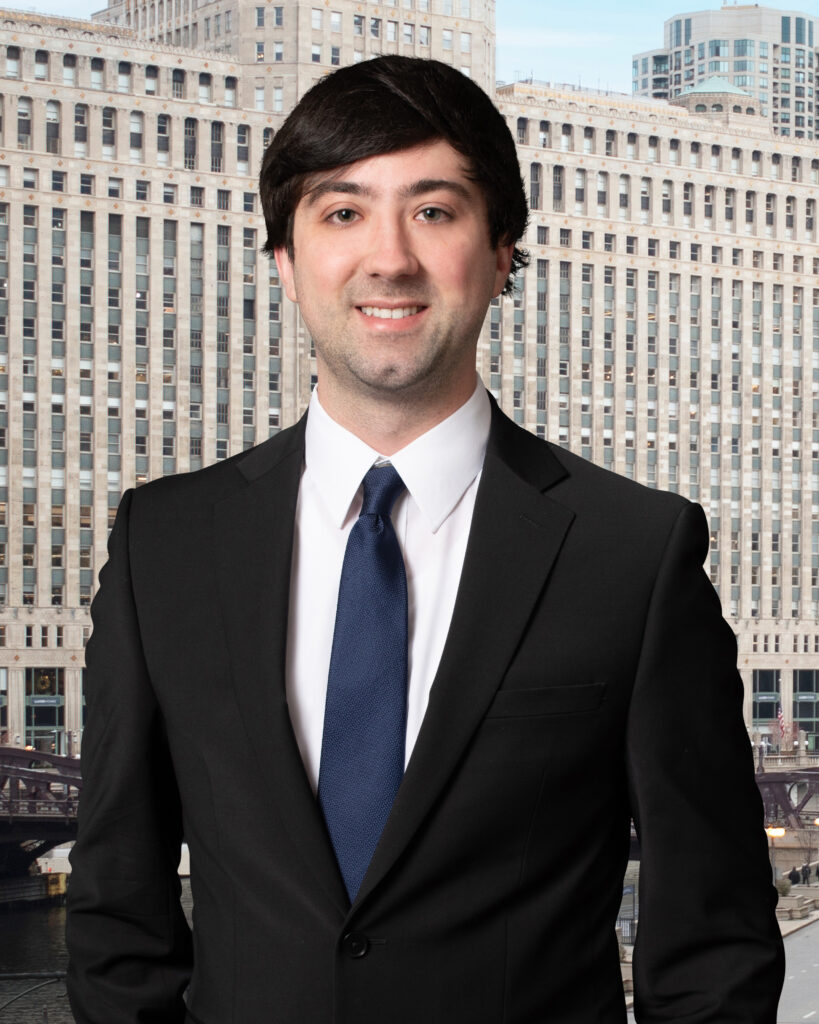
Irwin IP’s pro bono representations have been an integral part of the Firm’s mission since our inception. In 2021, as part of the Firm’s commitment to ensure all our attorneys are actively involved in giving back to our Chicago community, we hired a dedicated Special Counsel for Entertainment Law and Pro Bono Services. In response, Irwin IP attorneys rose to the challenge by collectively providing 1,518 hours to pro bono representation in the first three quarters of 2024.
Although all attorneys’ volunteer efforts are valued, meaningful and necessary, Irwin IP’s Pro Bono Committee chose Alexander Bennett as the Irwin IP 2024 Pro Bono Attorney of the Year. Please join us in sharing and celebrating the work of Alex who donated his time to provide over $37,000 in free legal services.
Irwin IP remains motivated to fill the gap in legal services and provide equal access to justice, and we are all proud of Alexander Bennett’s commitment to our Firm’s mission. Although Irwin IP specializes in providing support for musicians and artists through the Lawyers for the Creative Arts (LCA) organization, some attorneys have pursued a different path for their pro bono representation. Alexander is one of those attorneys.
Alexander collaborated with The Veterans Consortium (TVC), where he trained to help assist our veterans with their appeals before the Court of Appeals for Veterans Claims (CAVC). As the son of a veteran himself, Chief Warrant Officer 4 Max Bennett, Alexander feels a deep commitment to giving back to those who have served our country.
In the summer of 2023, Alexander began working with an Army veteran seeking a higher disability rating. After more than a year of dedicated effort, Alexander successfully secured a remand of the case back to the Board of Veterans Appeals (BVA), ensuring the veteran’s case would be reconsidered.
Please join us in celebrating Alexander Bennett and his impactful work in the pro bono community.
——–
Irwin IP specializes in mission-critical intellectual property and technology litigation, catering to a diverse client base, including Fortune 500 companies and innovative startups. Our expertise extends to enforcing and protecting intellectual property portfolios, ensuring our clients’ product lines, worth hundreds of millions annually, remain secure. Notably, we routinely, successfully litigate against the largest, most prestigious law firms representing the largest companies in the world on matters valued in the tens and hundreds of millions.

On November 1, 2024, the Second Circuit affirmed the district court’s entry of summary judgment that Ed Sheeran’s Thinking Out Loud (“TOL”) composition did not infringe Marvin Gaye’s Let’s Get It On (“LGO”) deposit copy, holding that under the Copyright Act of 1909, copyright protection of a musical work is limited to the four corners of the deposit copy filed with the Copyright Office at the time of registration. Sheeran was first sued for infringement of LGO in Griffin v. Sheeran, No. 1:2017cv05221 (S.D.N.Y. 2019) by successors to Ed Townsend’s share in the composition. That case ended with a unanimous jury finding that Sheeran was not liable for infringement.
A separate suit was brought in 2018 by Structured Asset Sales, LLC (“SAS”), a firm that purchases royalty interests from copyright holders, securitizes them, and sells the securities to investors.1 The court granted Sheeran’s motion for summary judgment, concluding SAS’s infringement claims were limited to the five-page 1973 deposit copy of LGO that encompassed the song’s melody, harmony, rhythm, and lyrics (“Deposit Copy”), and the chord progression and harmonic rhythm are commonplace.
The Second Circuit rejected SAS’s arguments that copyright protection should cover both the Deposit Copy and the sound recording of LGO, as well as its challenge to the exclusion of its expert’s opinion regarding an “implied bass line” in the Deposit Copy that is an alleged similarity between the sound recordings of the two compositions. The Circuit Court reasoned that the 1909 Copyright Act, which governs the 1973 Deposit Copy, requires depositing one “complete copy” of a musical work in order to obtain an enforceable copyright, as well as affixing a copyright notice on published works. Because a notice cannot be affixed to sound, a composition could not be published through the distribution of its sound recording. There is no copyright registration in the sound recording of LGO because the 1909 Act did not protect sound recordings. Therefore, the 1909 Act’s protection extends just to the “complete copy” of the musical work that is deposited with the Copyright Office, and so the 1909 Act extends only to the four corners of the Deposit Copy and elements that only appear in the sound recording of LGO are not protected.
The Circuit Court found that the allegedly infringing elements of Sheeran’s composition, including a similar four-chord progression and a commonplace harmonic syncopation, are not protectable by themselves, nor in combination. Further, the two songs are not substantially similar when taken as a whole, as neither the lyrics nor the melody “bear any resemblance” to each other. The Court was hesitant to grant a monopoly over a combination of “fundamental musical building blocks” which would “threaten to stifle creativity and undermine the purpose of copyright law: ‘To promote the Progress of Science and useful Arts.’”
The ruling in this case does not bear on litigants with copyright registrations under the 1976 Act, however, a 1909 Copyright Act plaintiff should be sure to register an updated sound recording deposit copy prior to filing suit if arguing infringement of protectable elements embodied in the sound recording.
